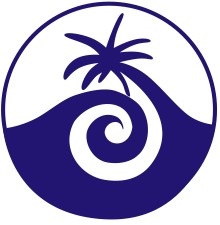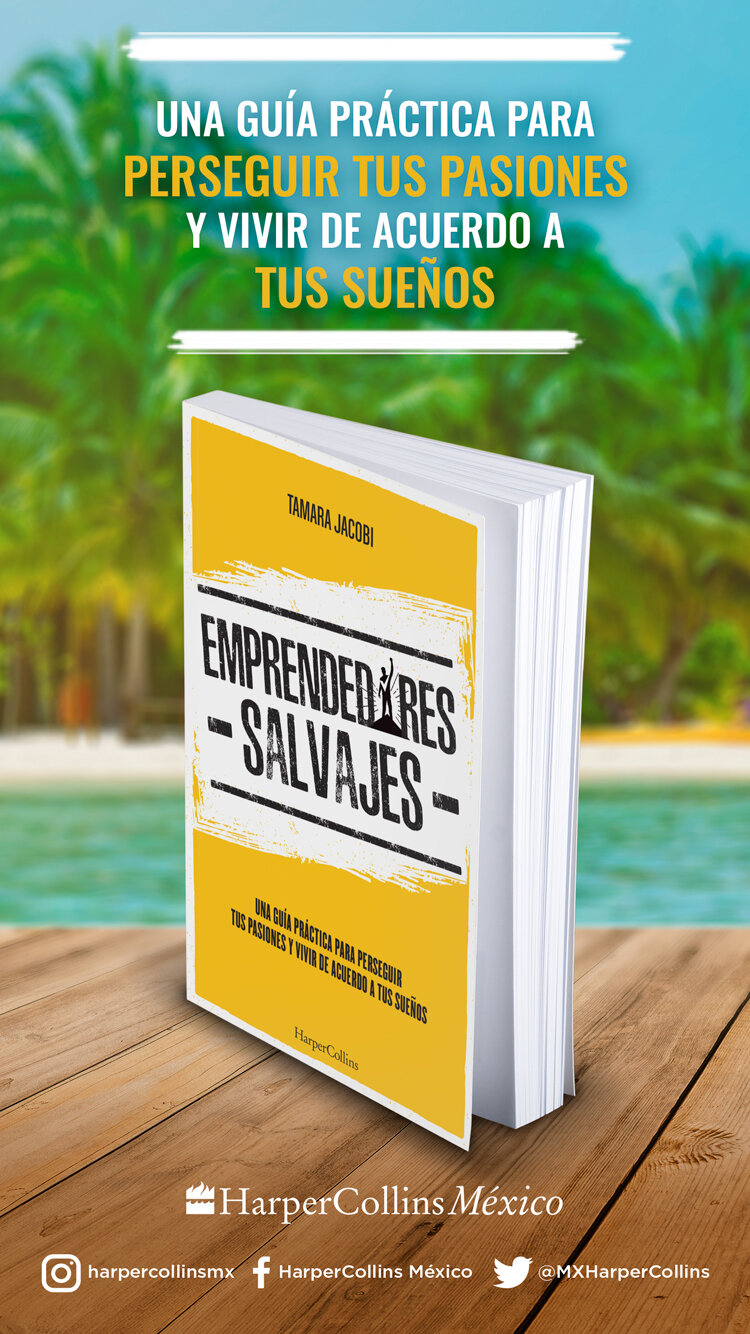A Jungle Love Story and Biomimcry
/Give Wildpreneurs as a Gift!
I thought it was love at first sight, but it wasn’t. Lust at first sight? Absolutely. The land cast its spell over me instantly with its gracefully swaying palm trees and flirtatious blossoms. But the reality of actually living in the jungle? Far less sexy. When the time came to spend my first night in the tropical wilderness, my anxiety skyrocketed. What creepy crawlies were out there? What might be lurking in the dark? I was tormented by nightmares and restlessness until dawn. This uneasiness came as a surprise to me. I’d spent most of my life outside; a true tomboy. But for a girl from Quebec, the Mexican jungle was new territory.
I’d arrived in the jungle in 2007, at 22 years old. Five years later…
“Holy shit, that’s a giant snake!” I heard the distinct shriek of a damsel in distress. Five years into my jungle life, I was leading a women’s retreat group on a hike when a huge boa constrictor slithered across the path in front of us. Twelve pairs of brightly painted toenails froze behind me in terror. As their leader, I had a split second to react. The words that tumbled out of my mouth? “Look, how beautiful!” I found myself genuinely admiring the snake—healthy and sleek, with gracefully symmetrical diamonds decorating its 3-meter length. I proceeded to explain to the nervous ladies that boas are an indicator of a healthy jungle ecosystem.
I was awestruck, not only by the exquisite snake, but by my inner calm. In the past, the mere thought of reptiles had sent horrified chills from my head to toes. Given this new reaction, something deep within me had undoubtedly shifted. On that day, in February 2013 (five years after opening the lodge), my love of the jungle became real. I would later learn that the serpent is one of the most widespread mythological symbols, offering profound wisdom around transformation, rebirth, harmony, and healing. In some cultures, snakes are perceived as an umbilical cord, joining all humans to Mother Earth.
Aptly, on the day of that boa encounter, I embraced the wild pulse of life. I had genuinely become “The Jungle Girl,” a nickname that I wear proudly to this day.
Learning to Read Nature
What brought on this shift? My once superficial relationship with the jungle had been transformed as I realized that I am a part of the wilderness. I no longer feared the wildlife; instead, I considered us to be on the same team.
Progressive farmers count and catalog the bird diversity around their pastures as a way of assessing the health of their farm. I wasn’t yet counting the birds and snakes in the jungle, but like these farmers, I had come to understand the vital importance of a healthy, thriving ecosystem. Fascinated, I began to observe nature and sought to learn from it. What I had initially perceived as a jungle cacophony was revealing itself to me as a symphony.
There is seemingly no end to the lessons that the natural world has to teach. Each morning I wonder, what might this new jungle day bring? Anything is possible, and I have learned to respect, appreciate, observe, and seek guidance from the flora, fauna, and local people, too (we are all part of this unique system).
Above all, the most profound lesson that the jungle has taught me thus far is that change is the only permanent thing. Just as the trees shed their leaves each year, I’m learning to let go and surrender to natural cycles. Mother Nature is the big boss! Though it’s important to have plans, hopes, and dreams, we are all at her mercy. As a friend told me recently: “Life is like a river. You must go with the flow, but don’t forget to use your paddle to steer!”
Biomimicry
We can see, now more clearly than ever before, how nature works her miracles . . . doing it nature’s way has the potential to change the way we grow food, make materials, harness energy, heal ourselves, store information, and conduct business. —Janine Benyus
The oak tree sleeps in the acorn…the most majestic beings in the natural world start out as tiny seeds. We have much to learn from the natural world! Ever heard of biomimicry? This philosophy encourages us to solve problems by asking the question, “How would nature do this?”
Poem by Yael Flusberg
Biomimicry seeks sustainable solutions to human challenges by emulating nature’s time-tested patterns and strategies. It’s a bridge between biology and design. “When we stare . . . deeply into nature’s eyes, it takes our breath away, and in a good way, it bursts our bubble. We realize that all our inventions have already appeared in nature in a more elegant form and at a lot less cost to the planet,” writes Janine Benyus, in her book Biomimicry. “The natural world has countless models for sustainable systems—prairies, coral reefs, old-growth redwood, and more. It’s an encyclopedia of knowledge, experience, efficiency, and function. If we want to build a pump, let’s look at the most powerful pumps on the planet—whale hearts. Even the wheel, which we always took to be a uniquely human creation, has been found in the tiny rotary motor that propels the flagellum of the world’s most ancient bacteria.”
How can you integrate biomimicry into your wild business? Becoming a biomimic means transitioning from learning about nature to learning from nature. Wildpreneurs look to the natural world with a beginner’s mind, just as we would look to our mentors and teachers. From there, we can use nature’s systems as models, springboards for our creativity. As we proceed, the fundamental question we must pose alongside each decision we make is “Will this allow life to continue?” The Biomimicry Institute also offers ten “Life’s Principles” to guide designs and systems, outlined below.
At the Tailwind Jungle Lodge, we are consistently working to incorporate these principles into our designs. Some efforts have been straightforward, some not so much. As in the natural world, the lodge is ever changing, evolving, adapting, learning, and improving. I’ve briefly broken down our experience with biomimicry as a resource for Wildpreneurs, but remember that perfection is not the goal here. Nature is perfectly imperfect!
1. Nature uses only the energy it needs and relies on freely available energy. Passive solar cooling (open air structures are cooled by the breeze, no AC), an extensive gravity-fed water system (no pumps necessary), energy efficient appliances, and minimal lighting (candles offer lovely ambience) have been highly effective and practical. When the power goes out, many of our guests barely notice. What energy is available to power your business?
Living aboard Swell (sailboat) has allowed me to drastically reduce my daily impact on the earth. Solar and wind power provide my electricity. I live closer to nature, and take time to cherish and appreciate it. I use less, need less, and want less—yet have never felt more fulfilled.
—Captain Liz Clark
2. Nature recycles everything. The natural world can’t put its factory on the edge of town. Research the recycling and composting opportunities in your area, but don’t stop at that, there are countless creative ways to go beyond this. At the lodge, we focus on natural building materials, minimal packaging, reuse, composting toilets, and more. What can you do to minimize and recycle your waste? Keep in mind that some of the greatest opportunities in the twenty-first century may be turning waste into profit. Is there potential for that within your business?
3. Nature is resilient. Where a tree falls in the jungle, new life immediately springs up. What can you do to create diversity and cooperation within your wild business so it will be prepared to bounce back quickly? Don’t just plant one crop, go for a mosaic that works together.
4. Nature optimizes rather than maximizes. Be mindful of your limits—personally, environmentally, and financially. Consider a baby whale or the sapling of a redwood tree; they start tiny and grow slowly until they reach their optimal shape/size. Nature is attuned to the power of a slow and steady approach and sustainable parameters.
5. Nature rewards cooperation. “Though there is plenty of predation, parasitism, and competition in the natural world, prevailing relationships are cooperative,” says Benyus. Most animals travel in flocks, gaggles, schools, and prides. Packs offer strength, safety, and competence. At the Tailwind Jungle Lodge, we synergize as a family (the Jacobi pack!), with our neighbors, and the local community. How might you and your business collaborate and synergize?
6. Nature runs on information. Weather, tide, wind, and swells—natural sources of information that alert and prompt us to prepare accordingly. How can you be mindful of the natural cycles in your surrounding environment?
7. Nature uses chemistry and materials that are safe for living beings. We just love Dr. Bronner’s peppermint soap tingle, particularly because it’s jungle friendly. How can you integrate natural products into your business?
8. Nature uses abundant resources. We have a unique type of tree here that my parents nicknamed “lover trees.” A fig embraces a palm tree, as though frozen in an eternal embrace. The locals call these higueras, or strangler figs in English. (It’s actually a parasitic relationship, the fig eventually kills the palm. Sorry, romantics.) Several of these spectacular trees fell on our property, and we used them as posts to support palapa roofs. What resources are abundant in your area?
9. Nature works locally. We are proud of our community and make localism a priority: employees, supplies, events, fundraisers, nonprofits, and so on. Our community center—Entreamigos (EA)—has played a tremendous role in uniting expats, locals, and tourists. The founder of EA, Nicole Swedlow, received an award from the Dalai Lama in 2014, recognizing her as an “Unsung Hero of Compassion.” How can you practice localism and get involved with your community?
10. Nature uses shape to determine functionality. The steep slope of our land has allowed us to incorporate gravity-fed water systems while the orientation and cool breeze that funnels up the ravine allows for passive solar cooling. Observe your canvas. How can you use shape to improve the functionality of your business?
Curious to learn more? Read on in Wildpreneurs










